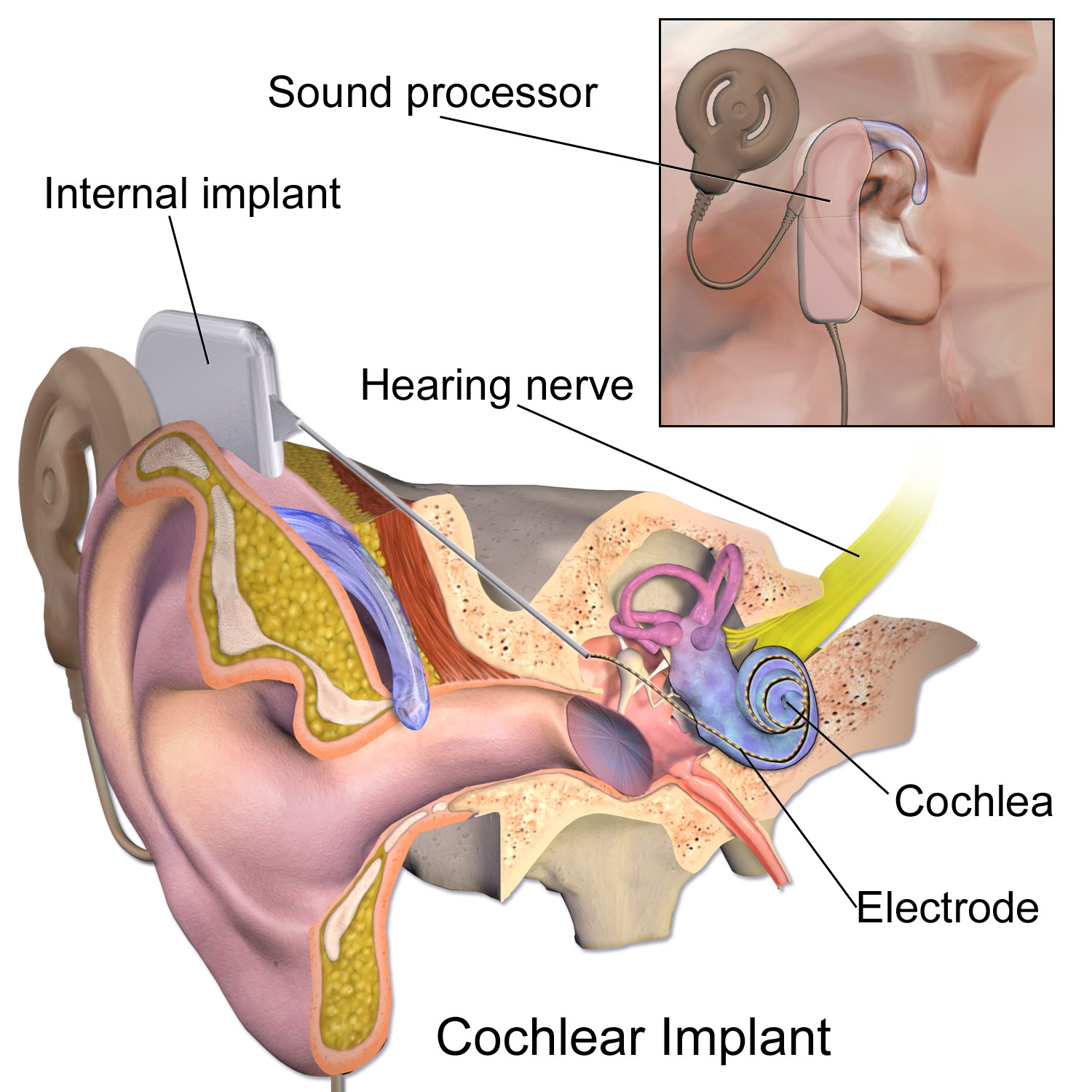Cochlear Implants
Sensorineural Hearing Loss/Cochlear Implants
Some children may be born with little or no hearing, or unfortunately, may lose their hearing due to infections such as meningitis or other factors. In this case, we are discussing sensorineural hearing loss, or nerve deafness, and not the hearing loss from congenital aural atresia which is described above. These children have lost the function of the hair cells in the cochlea, the organ of hearing.
For some children, the hearing loss is so severe that they derive little or no benefit from hearing aids. For such children, if they are otherwise generally healthy and the family and child are highly motivated, they may be considered as candidates for surgery to implant an artificial hearing device called a cochlear implant. Although the hair cells are gone, the special nerves in the cochlea that get hearing information from the hair cells, called the eight nerve cells, are usually still functional.
A CAT scan is performed to see if there is an opening in the cochlea that will provide a space to implant the electrode of the cochlear implant. For selected children with favorable anatomy, surgery may be performed to place the electrode in the cochlea and the special electronic package in the skull behind the ear. A separate electronic processor that is the size of a small portable radio and carried by the child, transmits the hearing information into the planted device.
The success rate for the cochlear implant is high and hearing is usually greatly improved. An intensive training program is continued after surgery is completed


